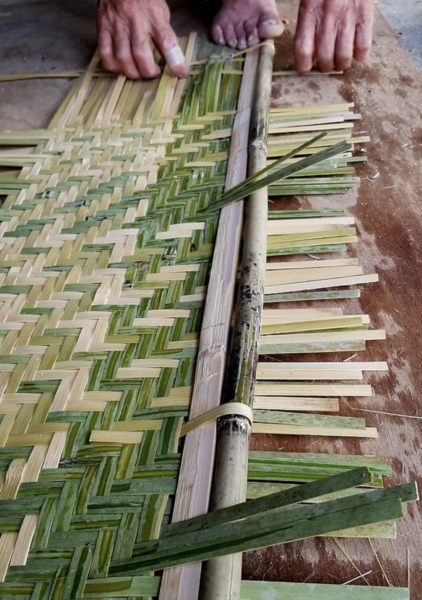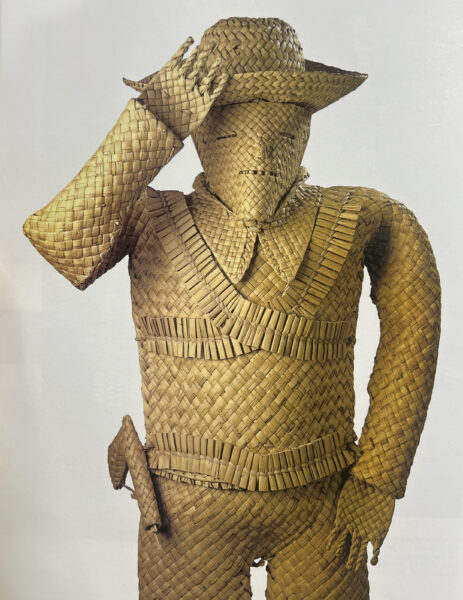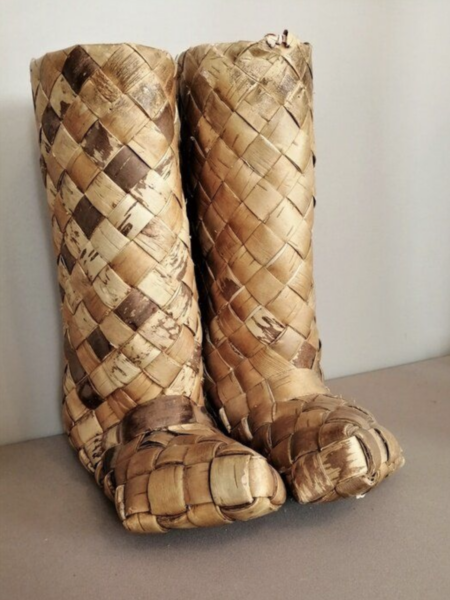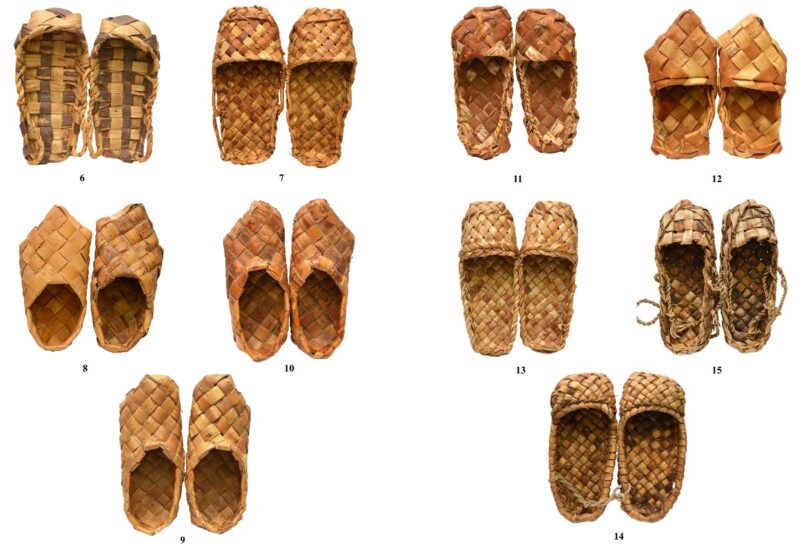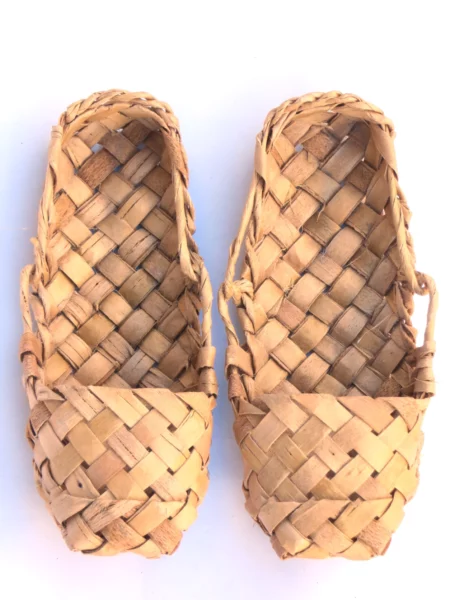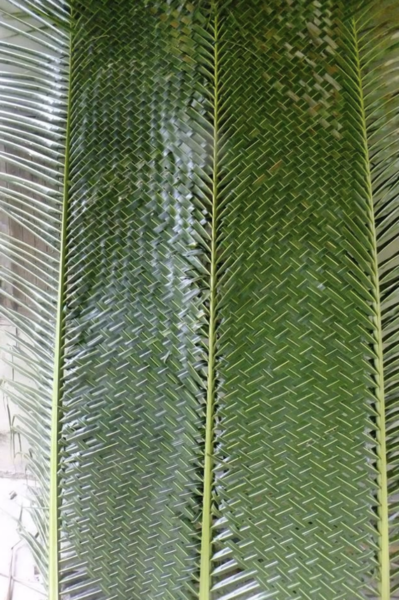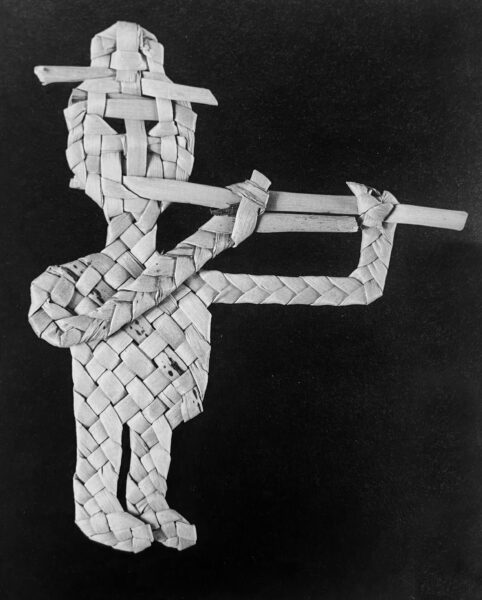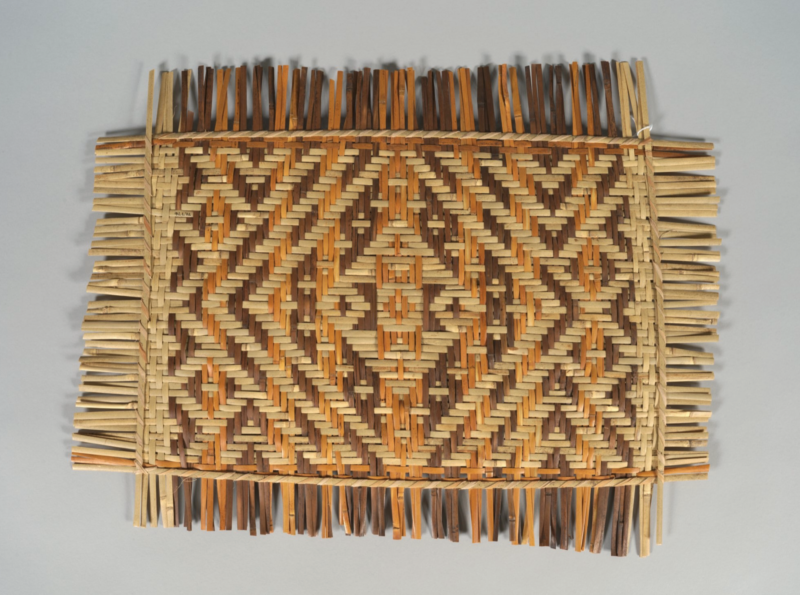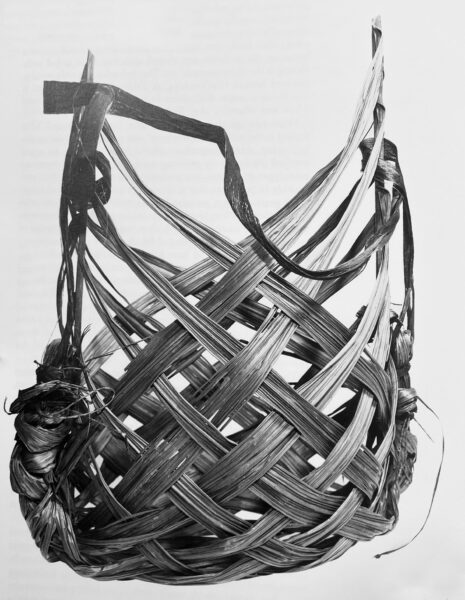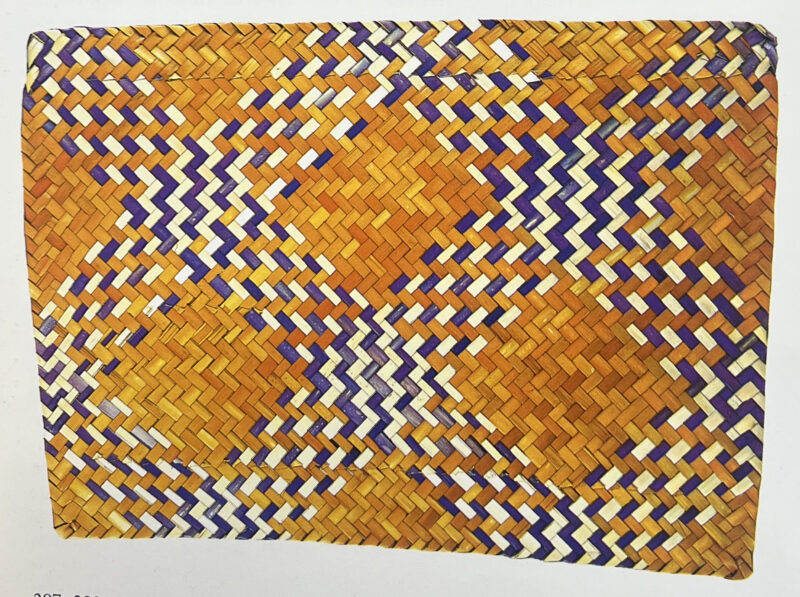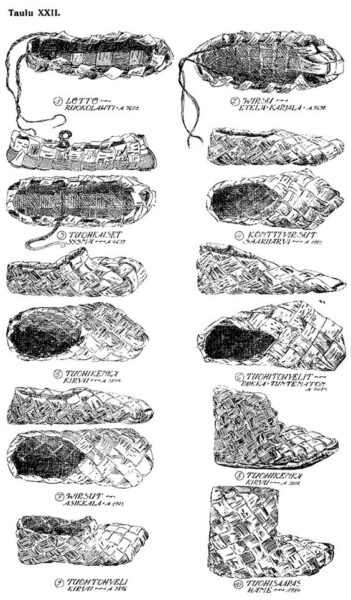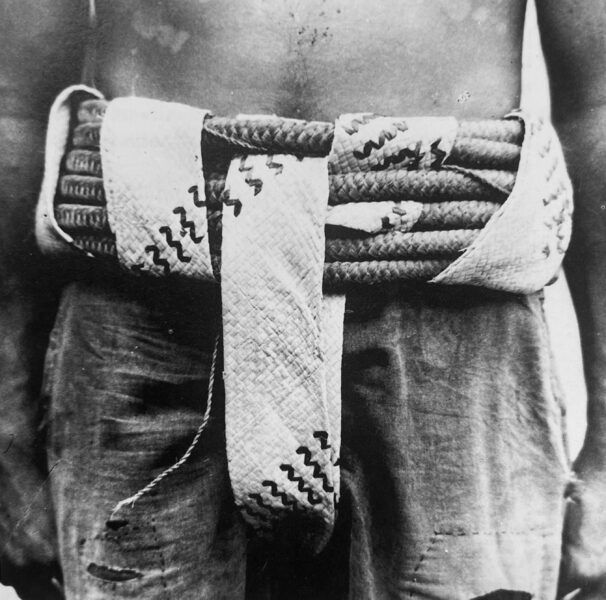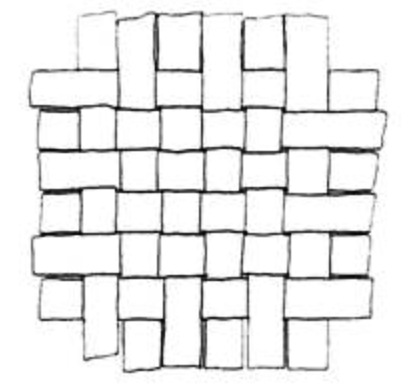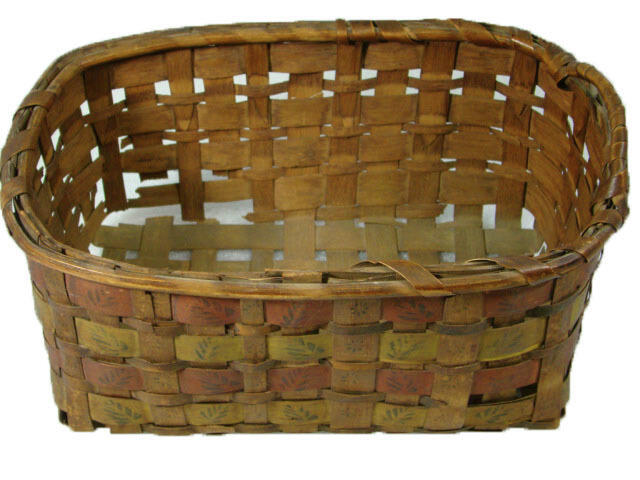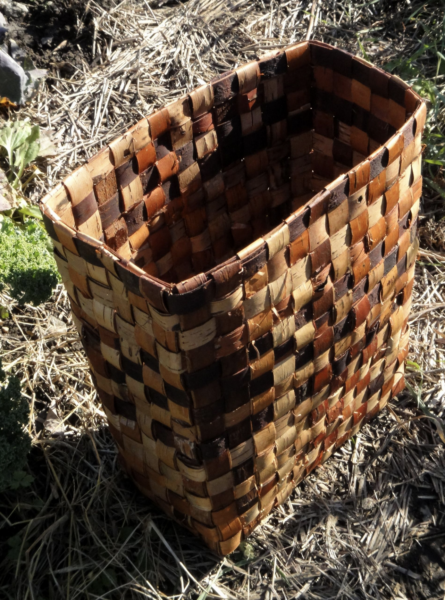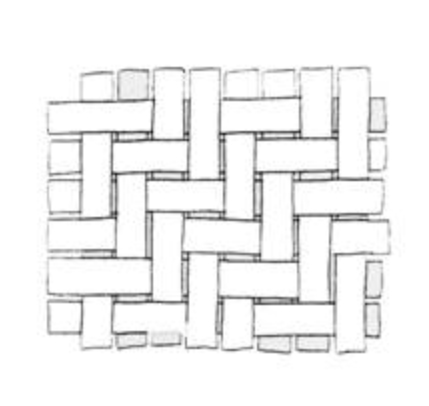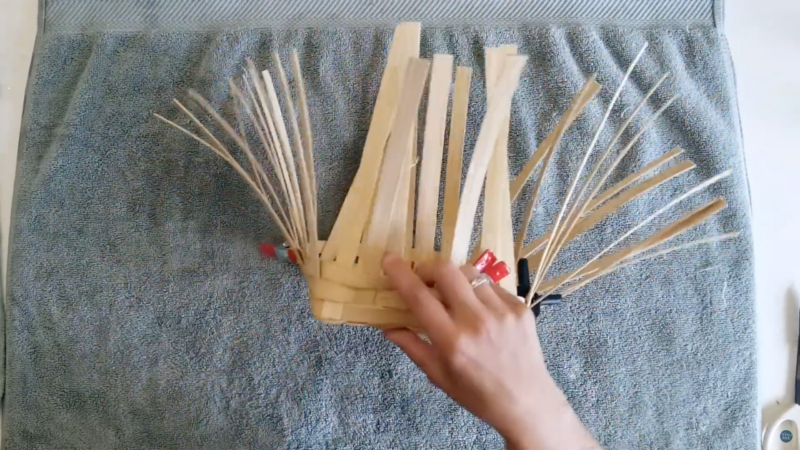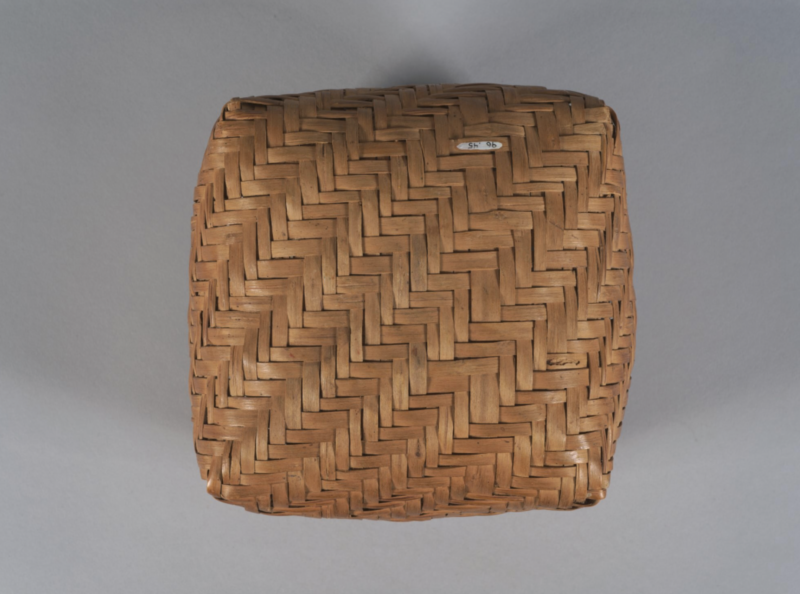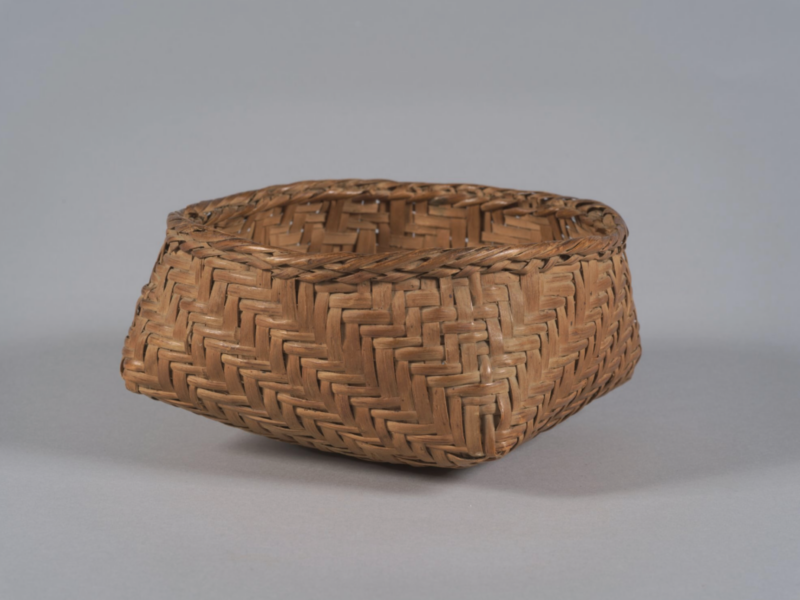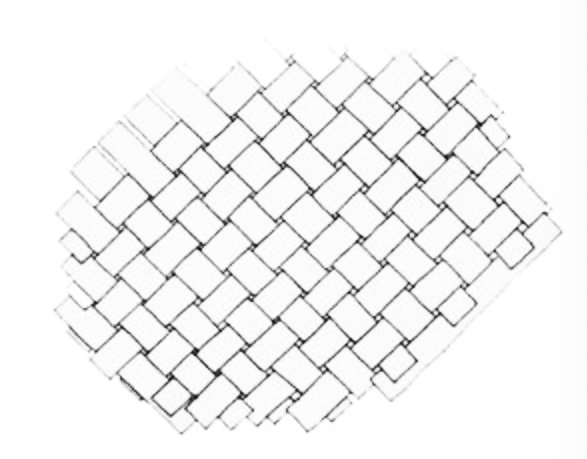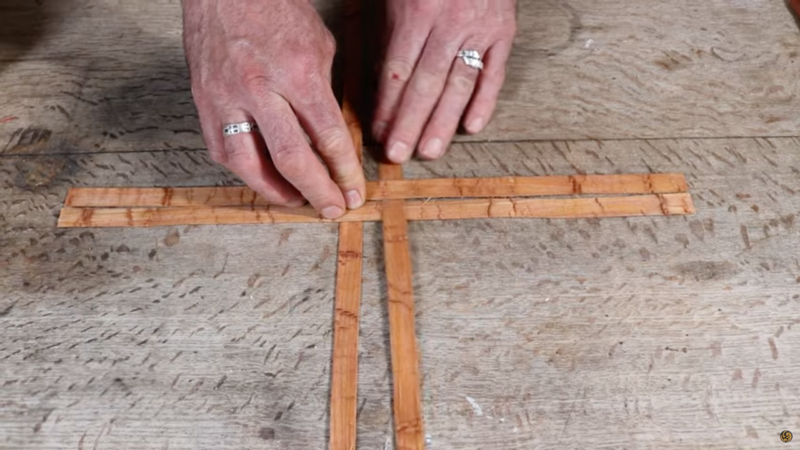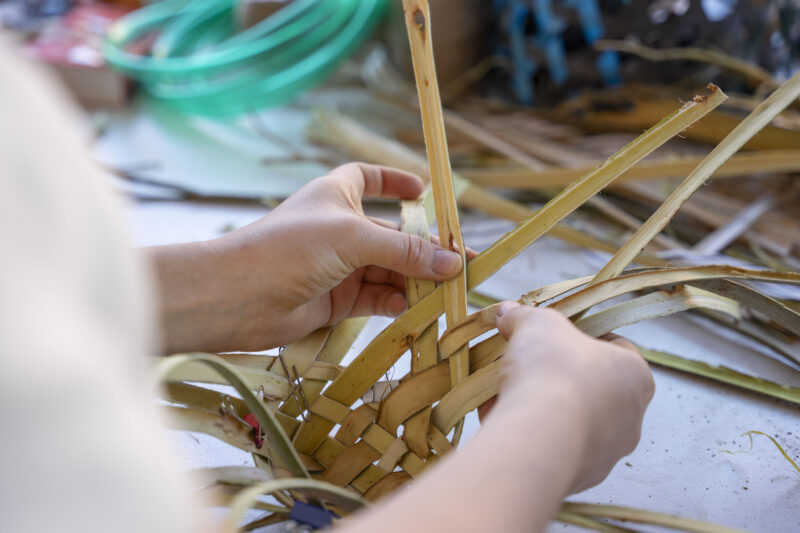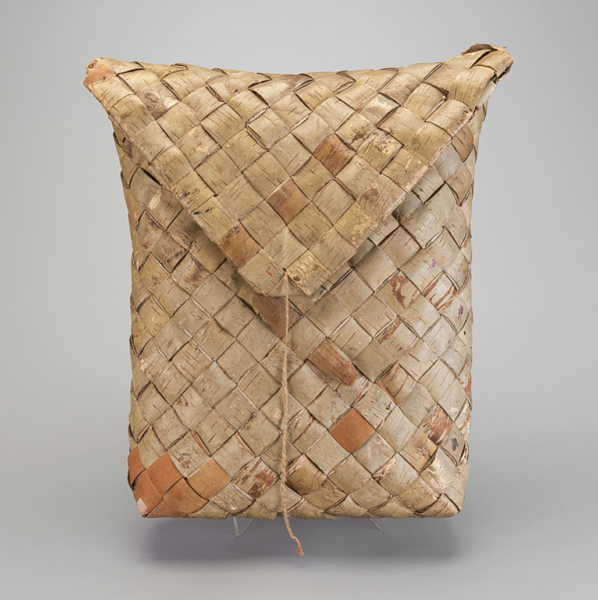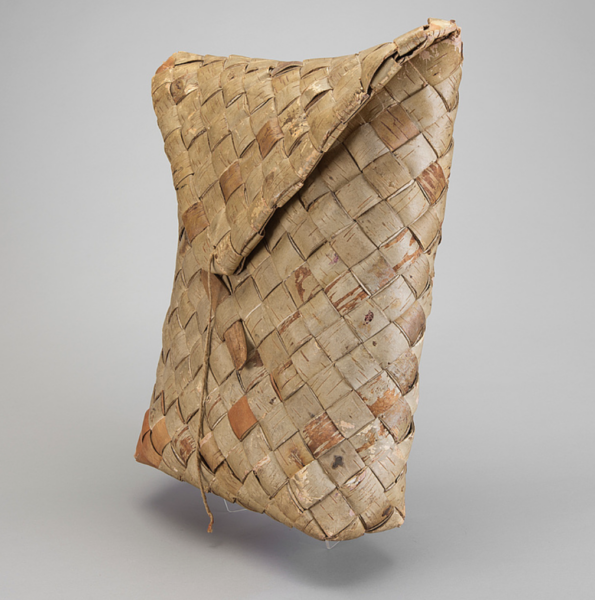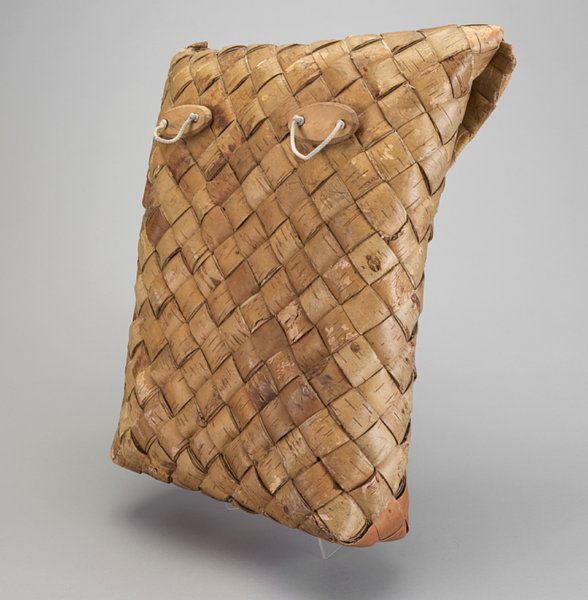basket plaiting
SOFT TOOLS / Crossing
For many years it was believed that stone were the first tools. Recently, the focus has shifted towards basketry. The technique lies not only at the basis of the first tools, but humanization also developed with and through the basket. Until today, basketwork is an enormously extensive and varied craft that is both exercised by local craftsmen and contemporary designers. Archeological evidence shows that it was already globally practiced during Neolithic times by indigenous people. In Europe, almost the whole range of basketry techniques is used, chiefly in making utilitarian objects but also in making objects primarily for decorative use.
Soft Connection Lab explores different techniques, which fit under the umbrella of basketry. As the research has led towards an alternative classification of the techniques – based on their primordial gestures, you’ll find basketry techniques in the categories coiling, twining, and crossing. We mainly used the plaiting technique as a tool to process foraged materials. By combining foraging with the plaiting technique Soft Connection Lab stimulates the connection between designers, artists and architects, and their natural environment.
Basket plaiting – also called 3D-weaving – is related to flat weave in weaving and has also warp and weft straps. Both the ability to create 3D-forms – by straight or diagonal plaiting – and the use of flat ribbons or straps distinguish this technique from other basketry techniques. While indigenous communities mostly used natural materials such as tree bark from Cedars in North America, Birch in Scandinavia or palm leaves and bamboo stems in tropical countries, you can basically turn every material, plant, or paper into a flat strap. The combination of the versatile possibilities in terms of materials and 3D-shapes ensures that basket plaiting can be freely applied in many different disciplines.
Roots
Plaiting is one of the earliest and most universal of all inventions. Its various structures have been devised countless times in every part of the world by every culture. It is so familiar that it is almost universally taken for granted. One could even say that after the invention of the loom, and particularly since the Renaissance and Industrial Revolution, weaving has so dominated fabric production that we have forgotten its roots, such as the plaiting technique. Since the 1980ies, an increasing number of crafts people and designers – such as weavers – rediscover the enormous potential of plaiting.
The first invented tools were for gathering food. Thanks to the containers fruits and vegetables could be collected, carried, and shared. The temporary baskets were probably the first plaited objects. Later the technique was also applied on hats, mats and even houses. It’s not clear how this evolved, but probably it was all a matter of coincident, trial and error.
On the evidence available, researchers have concluded that the salient characteristics of basketry are the same today as they were before the 3rd millennium bce. The primary systems of plaiting were an early human effort towards organizing matter. To achieve a regularity of form, it’s necessary to keep a systematic rhythm. This demands a strong sense of discipline, ingenuity, and control. Intellectual acumen and manipulative skills grew in the process, like counting, mathematics, and other systems. The ability of problem solving could led from baskets to huts and bridges, and finally engineering. Doing so, the development of social organization paralleled the production of these artefacts.
“Interlaced roots were the tree`s defense against the hazards of winter games combined with heavy burdens of snow. Ascribing root interlacing (weaving/plaiting) to the « survival of the fittest ». An analogy became obvious to me: just as weaving has enabled these trees to survive under the most challenging conditions, it has been basic to human survival ”
—Jack Lenor Larsen in Interlacing the Elemental Fabric
Traditional applications
Plaited objects possess some advantages: they can be produced with few or no tools and a wide range of usable – or easy to prepare – materials is accessible. Moreover, they combine features such as being light weighted, portable and at the same time strong. A particular feature of plaiting is its different gradations of density.
Dense plaited walls can inhibit the wind in a house or hold precious substances in a backpack. Plaited constructions are so mutable that they can span various scales: from miniscule baskets to architectural components, and from rigorous, organic, open, ephemeral, or tight two- or three-dimensional shapes.
Closely related to food
Basketry played an important role in the gathering, storage, and preparation of food. To gather roots, berries, shellfish, and other foods different baskets were – and in some cases still are – used. From sturdy baskets for large, heavy loads carried on the back over flexible, foldable woven baskets for berries to containers with open weaves for shellfish or seafood, which allow easy rinsing and water drainage.
Also, in the storage of food, baskets of various sizes played an important role. Some tribes also used basketry covers made of cedar bark to place over dishes or boxes filled with food.
To prepare food, baskets were used in several ways. Interesting examples are the drying of berries and roots on woven mats spread out in the sun, or the use of loosely woven baskets to strain oil from certain kinds of fish. Shellfish could be steamed in openwork baskets, but even closely woven, watertight containers were used to cook foods. To do so, red-hot rocks were placed in a water-filled basket, bringing the water to boil, until the food was cooked. This traditional way of cooking lasted until metal cooking vessels were introduced.
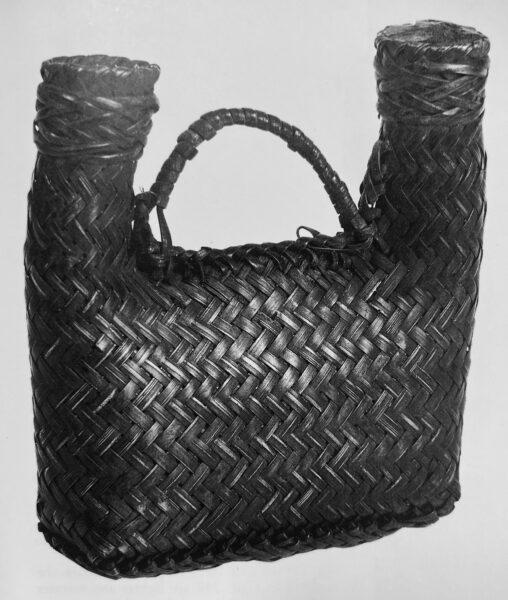
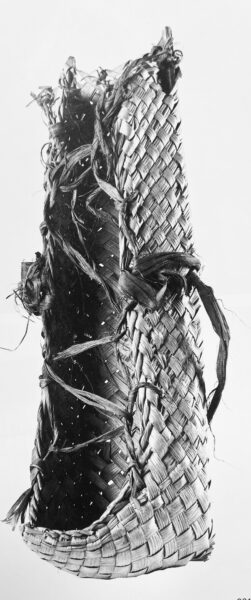
Decorative and protective garments
The most famous clothing objects made with plaiting are probably the Swedish birch bark shoes. As you can normally walk six miles with them, they’re also called 6 miles shoes. The video shows somebody who wears them:
Traditionally, bark from trees was often used for plaiting. It’s viscosity, water-resistance and durability make it a versatile material. In Finland, they mostly used the bark of the birch tree. Bark culture expresses since ages the environmental attitude and close relationship to nature of the Finnish, but also their sense of beauty and practical, creative mind.
In other parts of the world, you can also find rain capes made from shredded cedar bark or the flat leaves of cattail. As these materials shed water, they offer an excellent protection from the rain. Cedar bark can also be used for making aprons, skirts, and hats, which provide protection against both sun and rain. The most efficient examples can be found in the southern Northwest Coast and were often constructed from two separate, woven layers which were joined at the rims.
If you take it one step further, lightweight plaited garments even served to protect hunters and warriors, amongst others to force their way through brambles and bushes. Besides plaited belts also marked if somebody belonged to the warrior class at amongst others the Solomon Islands.
From furniture to architecture
As plaiting allows both two- and three-dimensional shapes, it was and still is used to create mats, chests, trunks, and cradles. Mats are made in a wide range of sizes, and different materials could be used to create them. In a more substantial dimension, mats have been used for canoe sails, house partitions and for padding on which to sleep and eat.
A particular aesthetic feature is the combination of the inside and outside of a bamboo peel. As the inside peel blackens with mildew, a rich geometry appears.
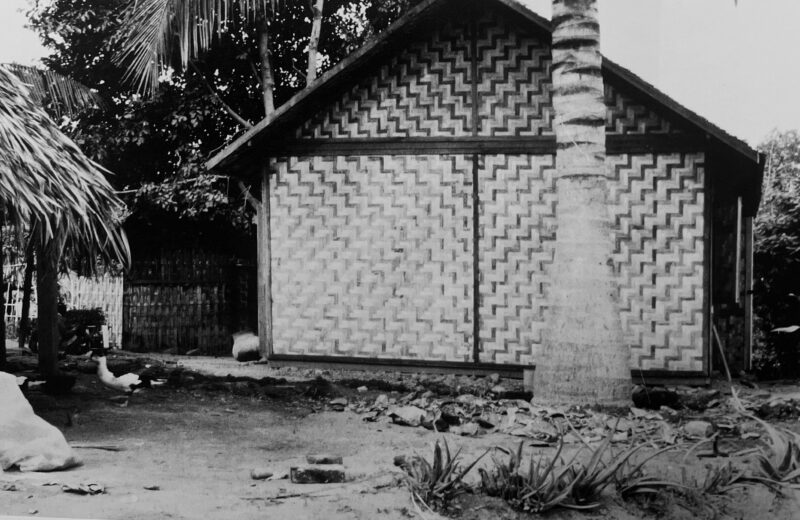
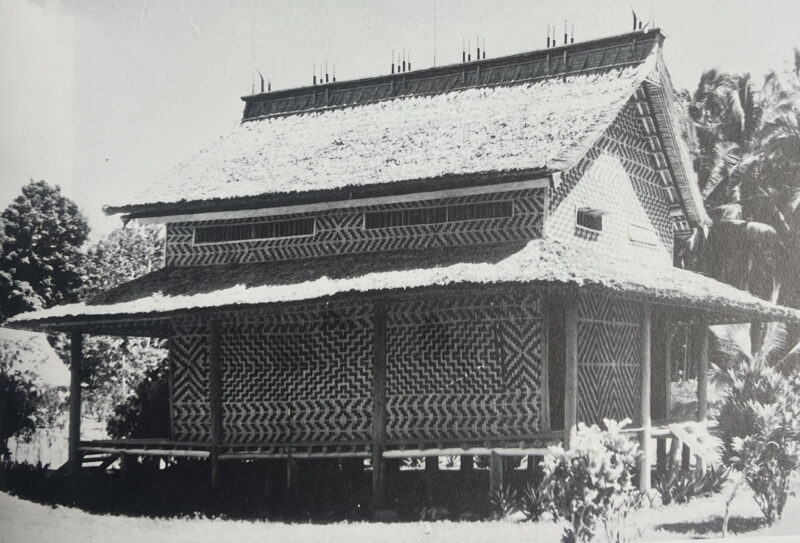
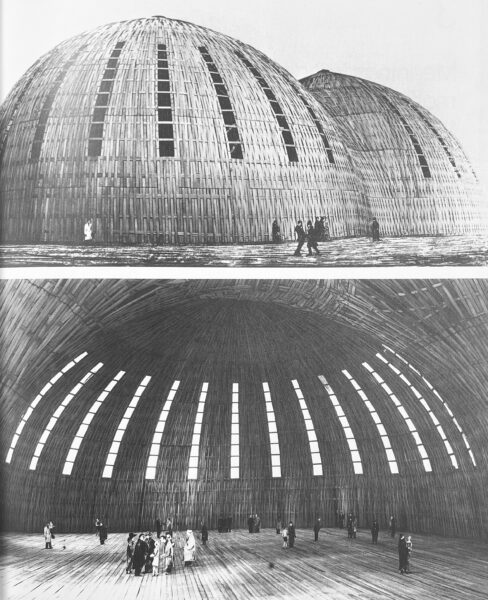
Watch & Learn
Plaiting is also known as checker weave. It’s a straightforward technique in which the weft crosses over and under one warp at a time. In flat plaited objects, such as mats, it can be difficult to distinguish the weft from the warp.
Many twined baskets (later link naar categorie twining invoegen) start with a plaited bottom. The weft and warp of the plaited bottom can be split into smaller pieces to become the warp of the basket sides.
Plaiting always needs to be done with flat tapes. There are three different techniques, which can all be turned into 3D-woven objects such as a basket, shoe, or hat. There are different ways to achieve a 3D shape. In the video’s below we share different instructions.
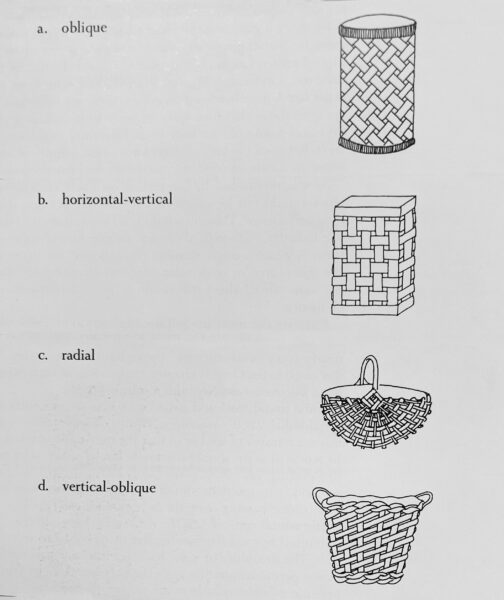
Rectangular plaiting
Twill plaiting
When the weft passes over or under more than one warp at a time, it results in a decorative pattern known as twilling.
Bias plaiting or oblique plaiting
Plaiting can also be done as a diagonal, or bias, weave. We mainly use this technique at Soft Connection Lab. While the strands are woven in a plain weave, you start to work more diagonal at the corners. Mats are the most ubiquitous application of oblique plaiting. Throughout the centuries they were and are made, with simple to intricate patterning, on nearly every continent.
